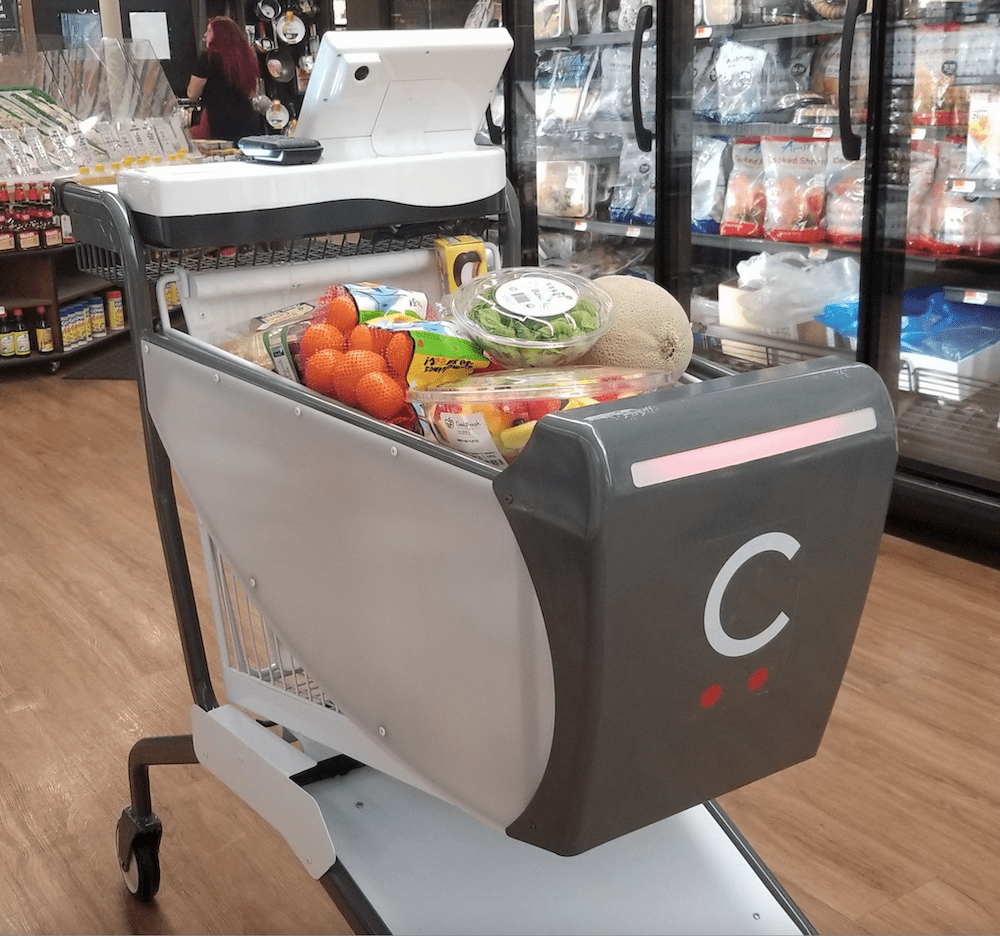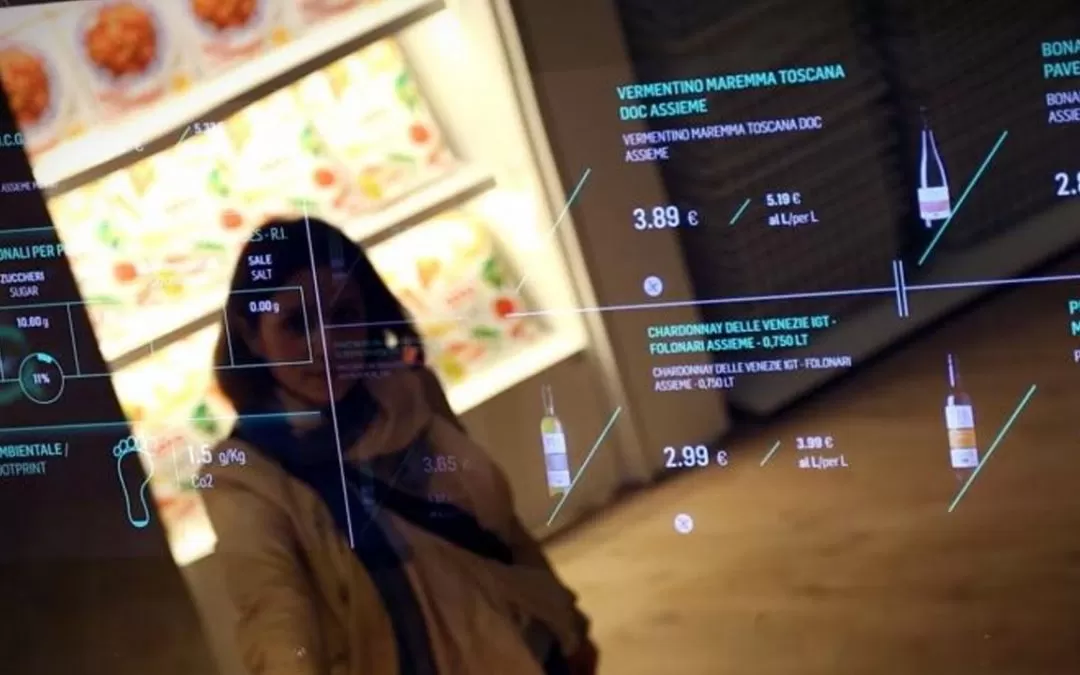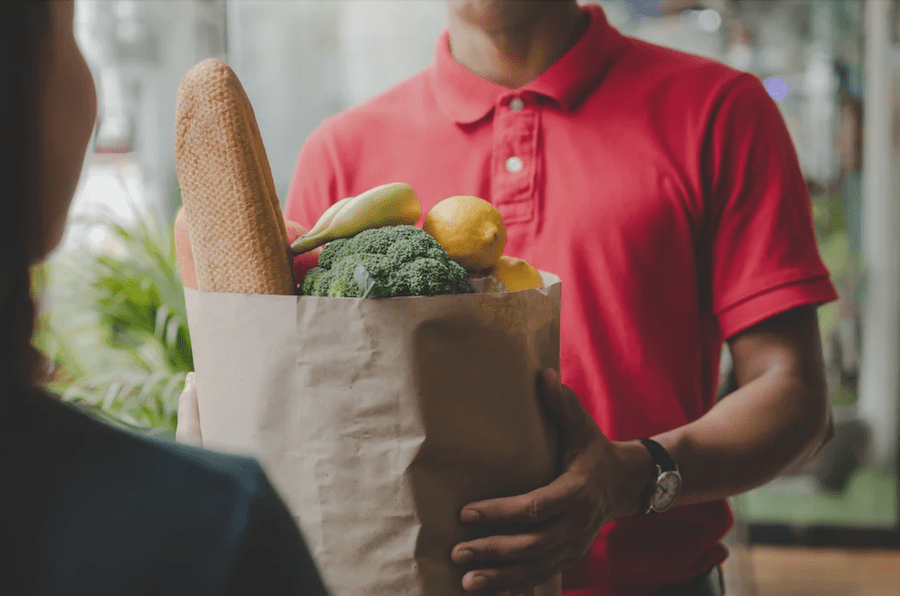With grocers projected to continue their digital transformations, five specific grocery technology trends are set to lead the way.
This, at a time when the fight among food sellers has expanded, intensified and gotten more complicated as inflation has heightened consumer sensitivity over prices, supply disruptions have caused shortages, and the race to complete orders — whether in-store, at curbside or delivered to the home or even inside the home — grinds on.
By many accounts, nowhere is the battle of the food basket more intense than at the checkout, where self-service is becoming the norm rather than the exception and next-generation cashier-less solutions are starting to gain real traction and share.
Grocery technology – Computer-Vision-Powered Checkout
In the new year, frictionless checkout systems will continue to gain ground. Just a month ago, eCommerce giant Amazon announced that it is bringing the technology to its first non-Amazon-owned United States grocer. Shortly thereafter, computer vision startup Trigo announced the opening of Germany’s first fully autonomous store with major German grocery chain Rewe.
As this technology becomes more widely available, more grocers will get on board throughout the year, and more consumers will become comfortable with the system.
Granted, this kind of pick-up-and-walk-out technology is not the only computer-vision-powered checkout option expanding across grocery chains. Smart carts are also becoming more common, scanning and automatically charging items as consumers place them inside.
Raz Golan, CEO and co-founder of smart cart maker Shopic, says that this technology is better suited to full-sized supermarkets, while Just Walk Out makes more sense economically for smaller convenience stores.
In three years, smart carts will be in at least hundreds of stores in each country — thousands in large countries. We will see retailers rolling this out full-on in their chains at a very fast pace. [We] will see the new way to shop — be it smart carts or Just Walk Out — becoming mainstream, well-known ways of grocery shopping.
Grocery Technology – The Shift Away From Subscriptions
For much of last year, free delivery subscriptions were top of mind for many major grocery chains.
Kroger, for instance, rolled out its Boost membership program, which offers free delivery and fuel deals for $59/year (or $99 for free two-hour delivery), nationwide in July. Meanwhile, Walmart has its Walmart+, Amazon has been looking to drive the adoption of its Prime subscription with grocery shoppers, and Instacart has been expanding the capabilities of Instacart+.
Yet, with rising prices having many consumers cutting back on subscription spending, we may see the turn away from these subscriptions toward digital investments that provide lower-commitment options for consumers and toward brick-and-mortar shopping.
Data from PYMNTS’ study which drew from surveys of more than 30,000 consumers across 11 countries, found a 4.5% sequential reduction in grocery subscription engagement.
This was the most pronounced “scale back” across all pillars measured, outpacing the roughly 2% declines seen in consumers’ use of telemedicine and restaurant apps.
With this reduction, brick-and-mortar grocers have the opportunity to gain share from digitally native challengers. Walmart, for instance, noted in its recent earnings call that there has been strength in its grocery business, in stores and online, in key markets like the United States and Mexico. Higher-income consumers have been visiting the stores more often, too, according to commentary on earnings calls.
Grocery Technology – Data-Powered Campaigns and Promotions
Throughout this year, grocers invested in their data-powered retail media offerings. In the final quarter of the year, membership-only warehouse club chain BJ’s Wholesale Club announced the launch of its BJ’s Media Edge service, and multinational grocer Ahold Delhaize’s U.S. eCommerce arm Peapod Digital Labs announced it was bringing its media network in-house.
“We’re probably one of the last large [grocers] to make this decision,” Peapod Digital Labs Vice President, Head of eCommerce Merchandising/AD Retail Media Bobby Watts said when asked. “There have been others before us, whether it was KPM [Kroger Precision Marketing] or Walmart Connect, and then most recently last year Albertsons, with their media collective they did. … So, it just felt like it was the right time for us to also make that move.”
With all these in-house marketing businesses now up and running, the challenge in the new year becomes for grocers to offer consumer packaged goods (CPG) brands the most comprehensive and actionable data analytics. Retailers will compete to provide the greatest campaign-targeting capabilities.
These offerings are highly in demand, with inflation threatening shopper loyalty. In an interview, Barbara Connors, vice president of commercial insights at 84.51°, the marketing insights subsidiary of Kroger, explained that consumers often discover that they like the brand that they have traded down to as much as the one to which they were previously loyal. Consequently, a major promotion push now, even as prices rise, may make more sense than a long-term campaign to win back those customers down the line.
“Historically, the reasons why someone may continue to be brand loyal just may not hold anymore because people are being forced due to financial constraints to make tradeoffs that they wouldn’t want to make,” Connors said.
Grocery technology – Hyper-personalisation manoeuvres to capture churn
Hyper-personalisation software is likely to make a significant impact on groceries in this coming year, able to identify what grocery shoppers are about to buy. “By getting in ahead of the curve, using AI/ML solutions to predict imminent consumer sales and nurture them to your store, will garner major market share” said David Swift CEO of SwiftERM.
“If you always offer each online shopper what they want – when they want it, it is only a matter of time before offers and incentives will take second place as the purchase has already been captured. Online grocery shoppers want to know the retailers appreciate them and their customs. You can only demonstrate this by reflecting each shopper’s interests in your offerings, putting their interests above your own”.
Grocery Technology – The Rise in Delivery for Remote Workers
Remote work is on the rise. A recent study found that a record number of consumers globally are at least partially working outside the office. The study noted that 44% said they had worked online remotely, up slightly from the previous quarter.
These consumers are dramatically more likely than those who do not work remotely to order groceries online. They reported using digital methods to make grocery and retail purchases four times more often than consumers who did not work remotely, with 63% stating that they had used a digital channel to order groceries in the last month.
Grocers can leverage on-demand delivery channels to meet the needs of these flexibility-seeking customers, promising to bring their foods to them where they want them when they want them. This shift is already underway, with grocers increasingly partnering with aggregators to offer that last-minute convenience.
“Grocers are overwhelmingly working towards an omnichannel strategy [and] to satisfy use cases from weekly shops to last-minute needs,” Christian Freese, Uber’s head of grocery and new verticals across the U.S. and Canada, said in an interview. “Delivery plays an important part of that.”
SwiftERM is a Microsoft Partner company. Click here to read more Grocery articles.





